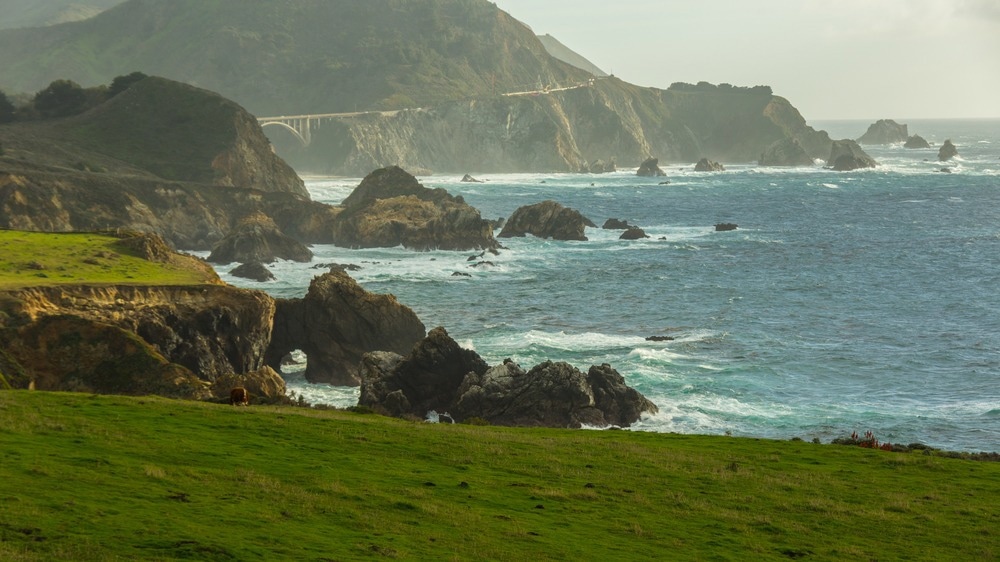The idea that Phoenix is dry, San Francisco is foggy, and Seattle is frequently wet is a common opinion. However, “always” is a strong word.

Image Credit: John Earl Webb/Shutterstock.com
Recent research from the University of California, Davis, combines climate trends across the Western United States during the Holocene Era, which spans from the present day to the last 11,000 years.
This look at the "true" Old West reveals that the defining features of California’s climate—foggy coastlines that gave way to towering redwoods, ocean upwelling that spawned productive fisheries, warm summers, and mild winters—first appeared around 4,000 years ago.
It also discloses a period when the Pacific Northwest was dry and warm while the Southwest was hot and humid.
An Understudied Era: The Current One
The study, which was published in Climate of the Past, sets the stage against which modern climate change in the region can be measured. It also sheds light on a less well-studied geological epoch, the Holocene.
We kept looking for this paper, and it didn’t exist. There are many records of past climate for a single location, but no one had put it all together to understand the big picture. So we decided to write it.
Hannah Palmer, Study Lead Author, Department of Earth and Planetary Sciences, University of California, Davis
Hannah Palmer recently earned her Ph.D. from the UC Davis Department of Earth and Planetary Sciences.
The researchers examined the interactions between land and sea temperature, hydroclimate, and fire activity across three distinct phases.
The research discovered:
- In comparison to pre-Holocene (last Glacial period) conditions, the Early Holocene (11,700–8,200 years ago) was characterized by warm seas, a warm and dry Pacific Northwest, a warm and wet Southwest, and relatively decreased fire activity.
- The pattern was reversed by the Middle Holocene (8,200–4,200 years ago). The surface of the ocean cooled, the Pacific Northwest turned cool and wet, and the Southwest became drier.
- The Late Holocene (4,200 years ago–present) is the most climatically variable period. It symbolizes a period when the “modern” climate and temperature patterns are established. The research identified a defined interval of fire activity over the past two centuries that is linked to human activity.
Unprecedented Interval
The research also considered the effect of humans on environmental changes at the time, indicating that the Era of Colonization (1850–present) symbolizes an unimaginable environmental interval in climate records.
Humans have been living here throughout the entire Holocene. The climate impacted them, and they impacted the climate, especially in recent centuries. This paper shows how that push and pull has changed over the past 11,000 years.
Hannah Palmer, Study Lead Author, Department of Earth and Planetary Sciences, University of California, Davis
Different Responses
Sometimes people point to recent rain or cold snaps as evidence against climate change. This study illustrates how different regions respond differently to global climate changes. That long-term perspective helps us understand the historical climate of the western U.S. and how it may respond moving forward.
Veronica Padilla Vriesman, Study Co-Author, Department of Earth and Planetary Sciences, University of California, Davis
Veronica Padilla Vriesman is a recent Ph.D. graduate from the UC Davis Department of Earth and Planetary Sciences.
Tessa Hill, a professor in the Department of Earth and Planetary Sciences and associate vice provost for Public Scholarship and Engagement, directed a graduate seminar on the Holocene period that inspired the research. Caitlin Livsey and Carina Fish are also co-authors. All authors were part of Hill’s Ocean Climate Lab at the UC Davis Bodega Marine Laboratory in the Department of Earth and Planetary Sciences.
Hill notes, “Climate records from the Holocene provide a valuable window into the context of human-caused climate change. They provide an opportunity for us to understand places that may be more or less resilient to change in the future.”
The research was supported by the National Science Foundation.
Journal Reference:
Palmer, H. M., et al. (2023) Holocene climate and oceanography of the coastal Western United States and California Current System. Climate of the Past. doi.org/10.5194/cp-19-199-2023.